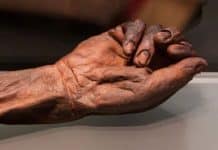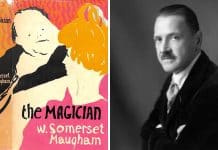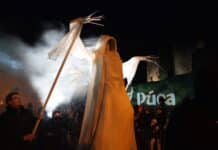The Hellfire Club on Montpelier Hill is Dublin’s ultimate hell house, writes PAUL MOYNIHAN
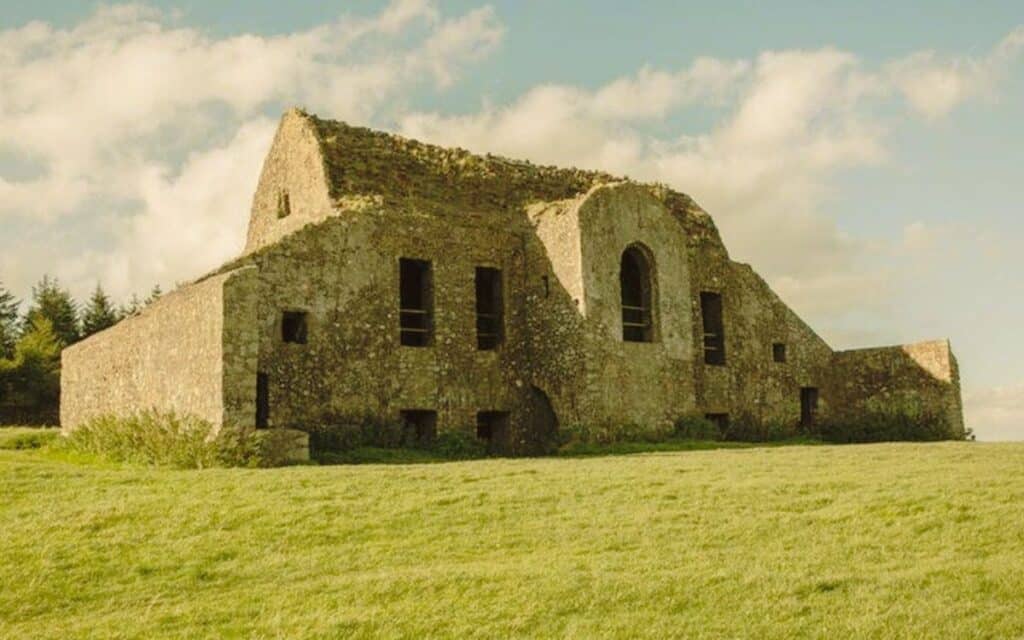
Every town in Ireland has its very own ‘house on haunted hill’, a place of notoriety and mystery where few dare to tread.
The most infamous of all of these is arguably Dublin’s Hellfire Club.
Sitting like a solitary watchman atop the capital’s Montpelier Hill, this terrifying centre of supernatural goings-on boasts a spectacular view of Dublin City, and has become a popular attraction for walking groups and tourists from all over the world.
Built in 1725 by William ‘Speaker’ Conolly, the building was originally a hunting lodge.
Sitting over 1,200 feet high, it provided its patrons with a great viewpoint for miles around.
Conolly was a wealthy landowner from County Donegal, and it is said that he gave the house the name of Montpelier.
It has since become known by locals simply (and scarily) as ‘The Haunted House’.
The building’s origins may provide a clue as to why so many claims of paranormal activity have been reported.
It is well-known that an ancient passage grave once sat close-by the lodge, dating back to the Neolithic Period.
Conolly used the stones from the grave when constructing the lodge, leading many to believe that this is the reason the building is a hotspot of unexplained phenomena.
After all of his efforts in completing the lodge, Conolly did not live long enough to use the building much at all; he passed away in 1729.
Hellfire Club takes over in 1735
The building would not go unused for long, however, as it fell into the hands of the Hellfire Club in 1735.
The Hellfire Club was essentially a men’s club, set up in the early 1700s exclusively for those with a taste for the debauched and the disturbing.
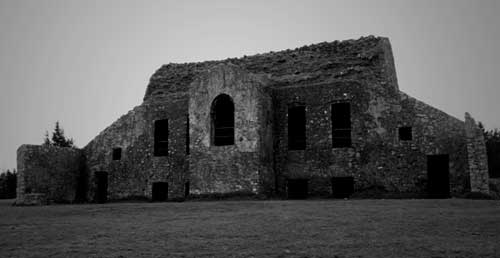
Referring to themselves as ‘bucks’ and ‘devils’, it is said that many members were in fact well-known politicians of the day.
The first incarnation of the club is believed to have originated in London in 1719, founded by the Duke of Wharton.
As the group began to expand and grow in both popularity and notoriety, an Irish branch was soon founded by Colonel Jack St Leger and his friend Richard Parsons, the 1st Earl of Rosse and Grand Master of the Irish Freemasons.
The duo’s hellraising behaviour was well-known at the time, their personalities reflected perfectly by the activities of the club.
It is believed that in the early days of the club, their meetings took place in a pub in Dublin city called the Eagle Tavern.
No longer standing, the pub was also famous for being the birthplace of the Society of United Irishmen of Dublin.
The now legendary gatherings of the Hellfire Club began with each member sitting around a circular table and drinking a repugnant liquid known as scaltheen (a horrendous mixture of melted butter and whiskey, laced with symbolically sinister brimstone).
Ritual involved setting fire to a cat
A toast would be made to the Devil, and an empty chair would occupy a spot at the table, should the dark lord himself wish to make an appearance.
The scaltheen would often be poured over a cat, and the men would set fire to the innocent creature as part of some strange, twisted ritual.
The group also frequented Daly’s Club on College Green, where similar activities were said to take place.
During the day, the shutters of the building were kept closed to allow the members to sleep away their hangovers and gamble away their money.
One of the most notorious incidents in the club’s existence occurred at this time when a man named Buck Sheely was caught cheating in a game of cards.
After a trial was held by his fellow members, it was decided that Sheely’s crime be punishable by death. He was then flung from the third floor window of the building, and was impaled on the railing below.
But of all the locations frequented by these raucous rebels, none was more famous than the hunting lodge on Montpelier Hill.
Many a tale has been told of the frightening occurrences that would take place at this lonely, remote site.
Tales of sacrifice, murder and The Devil
One such story tells of a priest who ascended the hill to investigate the club’s activity, only to witness the disturbing sacrificial ceremony of a black cat.
Stunned by this unspeakable behaviour, the priest grabbed the animal and began to recite the rite of exorcism.
Suddenly, a demon burst forth from the cat’s lifeless body.
Tales of demonic visitations to the club were frequent, one of the most frightening being the story of club member Simon Luttrell, the Earl of Carhampton. Luttrell was a vicious gambler, finding himself in financial trouble due to his addiction.
Legend has it that he made a pact with the Devil to clear his debts, and in return he would offer his soul within seven years.
On the night the Devil appeared at Montpelier in search of his end of the bargain, Luttrell fled in terror.
This was not the prince of darkness’s first trip to the Hellfire Club it seems, as another tale refers to his appearance as a stranger in search of shelter one night.
The club granted him admittance for the evening, and a game of cards began.
When one of the members dropped a card on the floor, he bent to pick it up. He was shocked to discover the stranger had a cloven hoof.
As the secret became apparent to the other men, the stranger disappeared in a ball of flame, leaving a stench of fiery ash in his wake.
This story is almost identical to that of Loftus Hall in County Wexford (which you can read about Loftus Hall’s phantoms and creepy card games here). It would appear that the tale is a popular legend associated with both locations.
Another nightmarish story is that of a local farmer who decided to investigate the supposedly supernatural goings-on at the club.
Upon reaching the top of the hill, he attempted to remain hidden within the surrounding woodland.
To his terror, he was spotted by a member of the club and dragged into the lodge.
As punishment for spying, he was forced to take part in all manner of depraved behaviour.
He was let go the following morning, and the legend goes that he spent the rest of his days in a state of astonishment, unable to remember his own name.
The lodge on Montpelier Hill continued to serve the members of the club until 1740, when the building succumbed to fire.
There are numerous versions of the reason for this mysterious event.
Many believe the members themselves burned the building, to give it a closer resemblance to hell.
Why did the Hellfire Club burn down?
Another popular belief is that a servant working in the club spilled a drink on Richard Chapell Whaley.
Whaley (whose nickname was ‘Burn-Chapel’, due to his supposed hatred of the Catholic religion and love for burning churches) reacted very badly, and covered the man in brandy.
He then struck a match and set the poor servant on fire.
It is said that the man ran frantically screaming around the lodge, setting many of the members alight in doing so.
Numerous members died as a result, and the interior of the lodge was destroyed by flames.
The activities of the Irish Hellfire Club began to die out after this event, until it saw a resurgence in 1771, spearheaded by none other than ‘Burn-Chapel’s son, Thomas ‘Buck’ Whaley.
This incarnation of the Hellfire Club would last for almost three decades, and the tales of debauched goings-on were as depraved as the previous generation’s.
On one occasion, it is believed, the group kidnapped a farmer’s daughter and took her to the lodge.
She was then murdered and eaten by the gang of wild men, as part of some supernatural sacrifice.
Buck Whaley’s unforgiveable behaviour eventually caught up with him when he sought sanctuary for his sins.
He visited St. Audoen’s church in Dublin to absolve himself, but his demonic behaviour manifested itself when he witnessed the Devil approach him from down the aisle.
Whaley left Ireland immediately, never to return. With his departure, the Hellfire Club was no more.
Ghosts on Montpelier Hill
That does not put an end to the stories of ghostly occurrences on Montpelier Hill, however.
Many visitors to the site today claim to have seen shadows darting throughout the building, claiming a malevolent presence still lurks within the forsaken lodge.
Numerous paranormal investigators have felt a dark energy move towards them at great speed, before disappearing again.
The sound of a woman screaming in agony has also been reported on several occasions.
This is believed to be the spirit of a woman who was kidnapped and thrown into a barrel, only to be set alight and rolled down the hill by the mad men of Montpelier.
Other visitors to the site have experienced someone pulling at their jewellery (particularly religious items) and scarves, as well as the feeling of being strangled. In some instances, the power has been strong enough to break the jewellery, a display of disturbing power from the otherside.
Outside the lodge, witnesses claim to have seen a solemn set of figures standing in a circle around the area where the passage tomb once stood.
Lodge haunted by ‘spirit of a dwarf’
The lodge and nearby Killakee House are also said to be haunted by the spirit of a dwarf, who was shockingly murdered by members of the Hellfire Club.
A mysterious black cat the size of a dog has been reported in the area by a number of witnesses.
The Hellfire Club of Dublin has provided the paranormal community with some of its most shocking tales.
A famous location for many researchers of the unexplained, the lodge on Montpelier Hill has become a place of legend and lore.
Steeped in a fog of murky mystery, the sight of this hellish ‘house on haunted hill’ will send a cold chill rushing through your bloodstream.
Many people say occult practices take place there to this day, signalling a possible rebirth of the club, perhaps.
No matter what the stories and folktales tell, the lodge has the power to strike fear into the hearts of those who have heard its secrets, be they true or not. A historic landmark, Montpelier Hill is captivating, breathtaking, but most of all it is imposing.
Staring out across Dublin city waiting for night to fall, once the moon comes out, the lodge plays host once more to the depraved men who made it so infamous all those centuries ago…
Have you been to Dublin’s Hellfire Club? Tell us about it in the comments section below!



